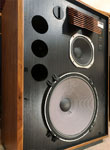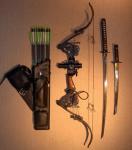They did have a sense of humor. Recently I was checking out the IC-150A owner's manual to help answer Midlife's questions about auxiliary input and found this gem:
and then they have an entire section detailing examples of Murphy's Law to which they say they do not adhere "hardly ever", such as:Quickie Tour of the Front Panel Display
AUX 1 and AUX 2: any device which can be connected to the AUX inputs, ie. guitar amp, additional tuner, additional tape recorder, electric razor, etc.11.7 A fail-safe circuit will destroy others.
11.8 A transistor protected by a fast-acting fuse will protect the fuse by blowing first.




 Reply With Quote
Reply With Quote












